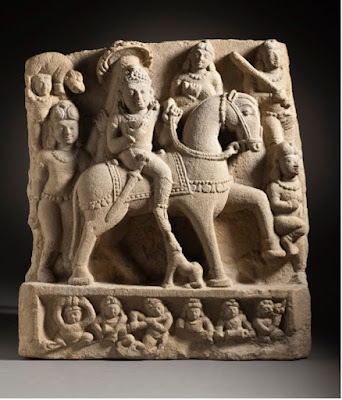Guest Article - Indian Mythology Series: Revanta

Sun, one of the primordial elements of Nature, is present as a revered deity in so many cultures. He is considered a life-giver and as many of us know and understand today is also known to cause heat waves. His role in Indian mythology is rather important and has a well-established cult in the country. We have very beautiful and elaborately planned temples dedicated to Surya. There’s more to Surya than just a life source and heat waves. Surya, according to Vishnu, Matsya, Kurma, Markandeya and Devi Bhagavata Puranas has an entire family tree, with wives and children. The solar deity is the father to many of minor deities like Manu, Yama, Yami, Shani, etc. The youngest of his children is Revanta or Raivata. Mythology It is common to note that Indian deities are known to shape-shift and Surya is no exception. According to the story, his wife Saranya or Sanjna is said to have been unable to bear the heat of Surya (just like the summer months of today) and took the form of a mare and we



